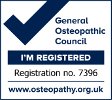Frozen shoulder
True Frozen Shoulder Syndrome (FSS) can be a very difficult and painful condition which affects an average of 3% of the population at any one time. It often starts for no apparent reason but is also linked with previous injury or prolonged immobility of the shoulder. Rarely does it result from an underlying condition such as diabetes or occur again in the same shoulder. It is often misdiagnosed. The basic definition of true frozen shoulder is where both the patient and the practitioner are able to lift the arm at the shoulder as it is ‘locked’ in place with very little range of movement in any direction.
Frozen shoulder, also known as adhesive capsultis, is caused by the capsule of the shoulder becoming thickened and inflammed resulting in it sticking together and the synovial fluid within the joint reducing in volume. The muscles surrounding the joint quite quickly ‘switch off’ as an over-reaction to the inflammation. This causes a variety of symptoms, particularly reduced range of motion and pain, depending on which the three phases you are in – noting that it lasts an average of 30 months. Symptoms in each of the approximately 10 month phases can be as follows:
- Initial freezing phase – sharp catching spasms, aching during the day and night pain which can wake the patient. Stiffness starts at this stage
- Frozen phase – much less if any pain but considerable loss of range of movement meaning that doing simple tasks becomes quite difficult
- Defrosting phase – slowly the movement returns and the patient can eventually return to normal activities
Osteopathic treatment can help relieve frozen shoulder syndrome in conjunction with medication prescribed by a medical professional (usually paracetemol and anti-inflammatories in the painful stage but corticosteroid injections can also be administered)depending upon which phase the patient is in. Soft-tissue massage and gentle articulation and stretching release the shoulder with treatment to the neck, upper back and shoulder girdle also maintaining mobility and maintaining shock dissipation through the body.







